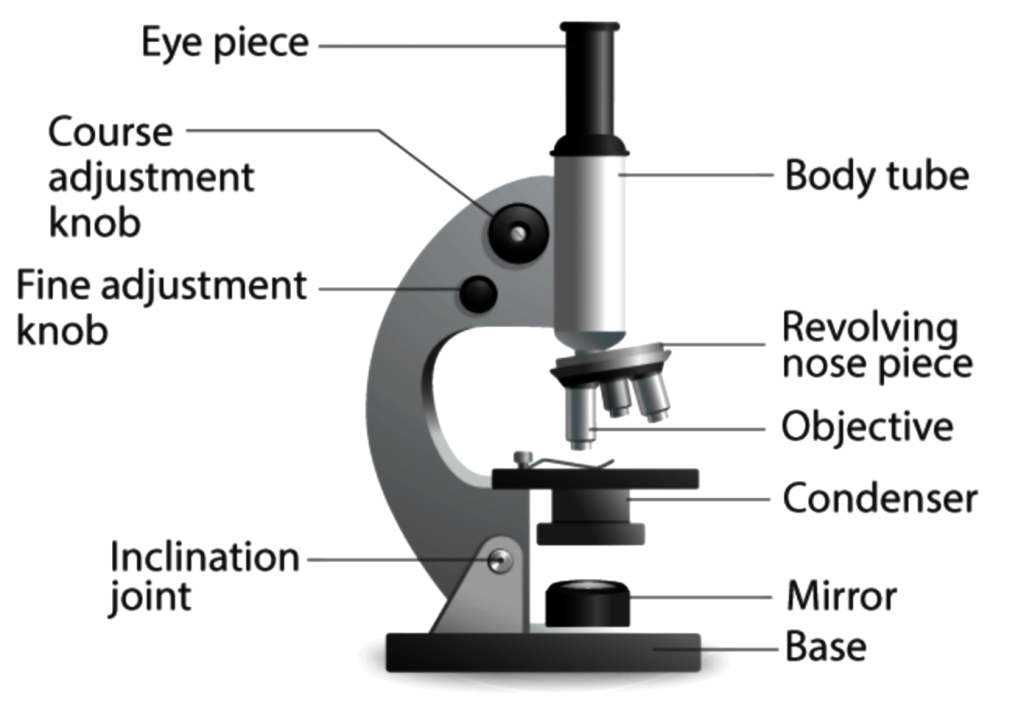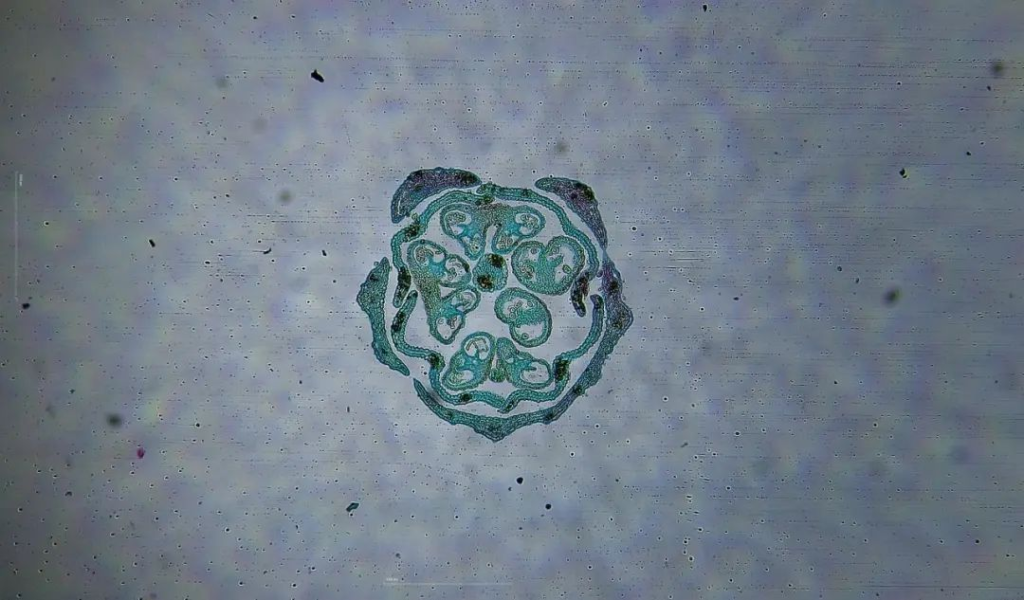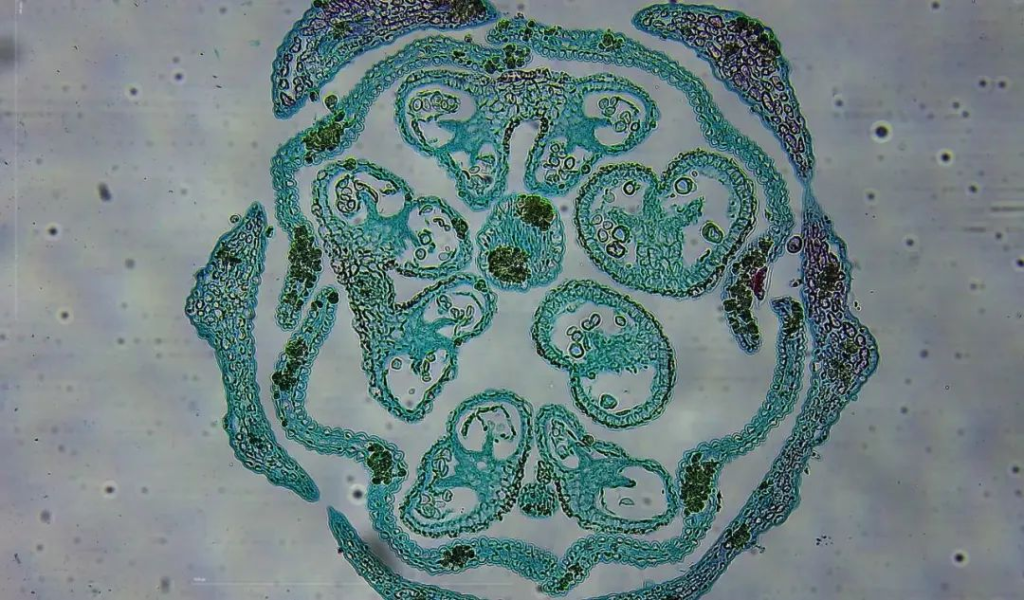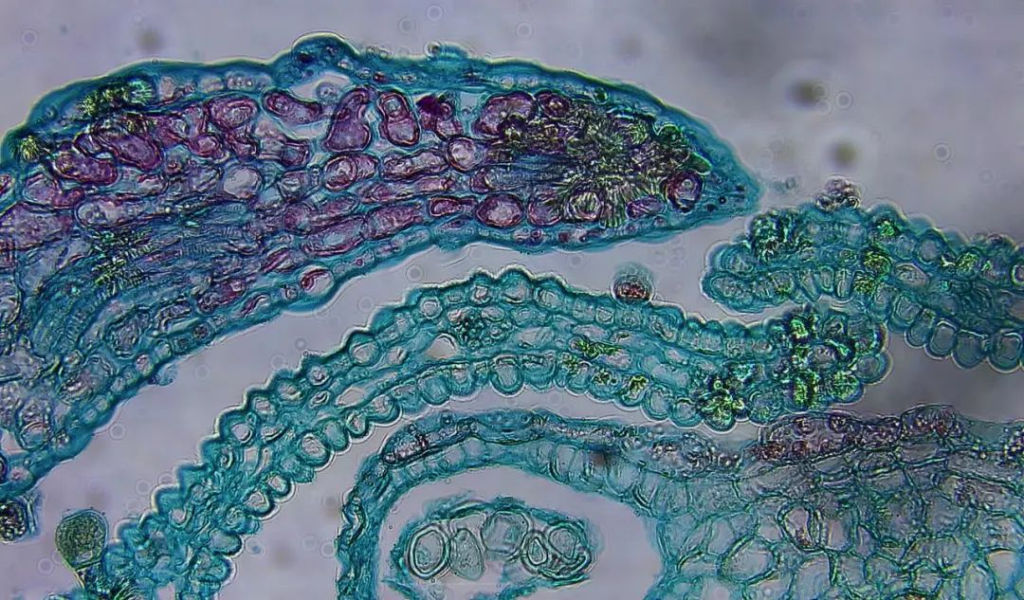Microscopic identification of traditional Chinese medicine is an identification method that uses a microscope to observe the cells, tissue structure and cell contents inside the plant (animal) medicinal material, and to clarify its microscopic characteristics, so as to achieve the purpose of identification. An optical microscope is an indispensable instrument in the observation of Chinese herbal medicines. It is one of the four traditional identification methods of Chinese herbal medicines and has the characteristics of simplicity and economy.
This article mainly includes: the basic understanding of the optical microscope, the steps of using the optical microscope, and the steps of taking pictures with the microscope lens. The final observation results will take the cross-section of mint flower as an example, using four different multiples of the objective lens 4X, 10X, 40X, and 100X to present different observation effects.
Basic understanding of optical microscope

Ordinary optical microscope is the most basic type of microscope in optical microscope, mainly composed of condenser lens, objective lens and eyepiece, its maximum resolution is about 0.2μm, and its maximum magnification is 1000 times.
Optical Microscopy Procedures
- 1. The room should be clean and dry, and the test bench should be level, stable and without vibration. When taking out the microscope from the microscope cabinet or mirror box, hold the mirror arm firmly with your right hand, hold the mirror base with your left hand, take it out smoothly, place it on the tabletop of the test bench, and place it in front of the left of the operator, about 10cm away from the edge of the test bench. Arms facing you, barrel facing forward. The drawing utensils are placed on the right side of the experimental table;
- 2. Put the glass slide on the stage, fix the sample to the central position, observe from the eyepiece under the 4x objective lens, and slowly adjust the eyepiece distance at a uniform speed until the field of view observed by both eyes is the same; adjust the condenser and aperture, first Use the coarse quasi-focus screw to adjust, and then use the fine quasi-focus screw to slowly fine-tune until the object image is clear and observe the shape of the sample;
- 3. Rotate the objective lens revolving unit, pay attention not to rotate the objective lens directly, align the sample with the 10X multiple objective lens, and adjust the fine focus screw until the details of the sample are clear;
- 4. Switch the 40x objective lens, adjust the fine focus screw to focus on the sample until the details of the sample are clear;
- 5. When the oil lens is needed to observe the cell structure, turn the objective lens converter, place the slide glass in the gap between the 40x magnification mirror and the 100x magnification mirror, and add a small drop of cedar oil to the center of the cover glass material. Gently and slowly rotate the objective revolving lens to the 100x magnification, adjust the fine focus helix to focus on the sample, adjust the condenser and aperture until the sample details are clear;
- 6. After use, turn off the power or adjust the light to the minimum, adjust the stage to the lowest position, rotate the 4x objective lens to the center of the stage, remove the glass slide, and wipe the 100x lens with lens paper;
- 7. After the microscope inspection, slowly rotate the lens away from the glass slide, and immediately clean the lens and cover glass;
- 8. Turn off the built-in light source and unplug the power plug, or make the reflector perpendicular to the condenser. Rotate the revolving nosepiece so that the objective lens is in a figure-eight position facing the light aperture. Then adjust the distance between the lens barrel and the stage to the nearest, and lower the condenser. Put the dust cover on and return the microscope to the cabinet or mirror box.
Precautions for using an optical microscope:
1. Observation under 100x high-magnification lens: the working distance of the oil immersion objective lens (referring to the distance between the surface of the front lens of the objective lens and the object under inspection) is very short, generally within 0.2mm, and the oil immersion objective lens of general optical microscopes does not have a “spring device” “, so when using it, the focusing speed must be slowed down to avoid crushing the slide and damaging the objective lens.
2. Clean the oil lens: Generally, wipe off the cedar oil drops on the lens with a lens tissue. Then dip a little ether-alcohol mixture (2:3) with lens tissue to wipe off the residual oil, and finally wipe it off with clean lens tissue (pay attention to wipe in one direction).
Microscope lens photography steps
- 1. Turn on the computer and click on the network digital interactive experiment system software;
- 2. Display the scale: Click the dynamic measurement, and the scale mark will be displayed on the screen. Note that every time the sample is observed with an objective lens of different magnifications, it is necessary to adjust the magnification of the objective lens of the software to be consistent with the former;
- 3. Image Capture: Click Image Capture and select “Highest Resolution Shooting”;
- 4. Picture naming: naming includes the full name of the sliced sample, the name of the photographer, the multiple of the objective lens, and the specific date.
Slice observation display




The above is the simple content of this article about learning to use microscope instruments, adding a new skill to yourself. I hope everyone can learn to use the microscope and observe with the lens!